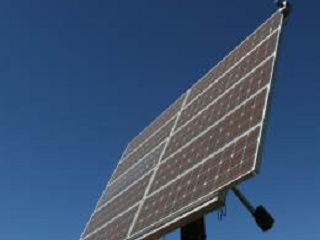The rapidly changing world of solar energy
Written by Michael Boxwell
 I wrote the first edition of my Solar Electricity Handbook early in 2009. It is not a long time ago. Yet the 2015 issue of my book is the nineth edition. In each edition, I have had to rewrite significant sections of the book in order to keep up with the rapid pace of change.
I wrote the first edition of my Solar Electricity Handbook early in 2009. It is not a long time ago. Yet the 2015 issue of my book is the nineth edition. In each edition, I have had to rewrite significant sections of the book in order to keep up with the rapid pace of change.
The rapid improvement in the technology and the freefall in costs since early 2009 have transformed the industry. Systems that were completely unaffordable or impractical just two years ago are now cost effective. To put that into perspective, the original example project I included in the book, running a small holiday home entirely off-grid, would have cost around £2,400 back in 2009. Today, the entire installation could easily be done for under £1,000.
Yet it is not just costs that have changed. Solar panels available today are smaller, more robust and more effective than ever before. Efficiency levels are improving, especially in poor light conditions. Product quality is improving too, as customers demand better product with longer warranty. When all these improvements are combined, it is no wonder that solar is making such great leaps forward. For more applications than ever before, solar is the best and most cost effective way to generate electricity.
Over the coming years, all the signs are that the technology and the industry will continue to evolve at a similar pace. In the next three years, solar will become the cheapest way of generating electricity available. We are likely to see solar energy incorporated into more and more everyday objects such as laptop computers, mobile phones – even clothing. Meanwhile, solar energy is going to cause a revolution for large areas of Asia and Africa where entire communities currently have no access to electricity.
Even large scale solar projects - entire solar power stations, capable of generating many megawatts of electricity, are now becoming feasible. In the United States, United Kingdom, Germany and Mexico, solar photovoltaic power stations are now generating electricity for entire towns. In Spain, new giant thermo-solar power stations have come up with new ways of not only generating electricity during the day, but storing the sun's energy so that it can be used for generating electricity overnight. Other solar designs currently in development are generating electricity whilst desalinating sea water, making it suitable to drink: a technology that could be used in Africa and Asia not only to generate large-scale electricity, but also to eradicate the huge water shortages that are likely to become a major issue as the planet heats up over the next few years.
As an easy to use and low carbon energy generator, solar is without equal. The technology is likely to touch every person on the planet inside 20 years. Its potential for changing the way we think about energy in the future is huge. Welcome aboard.
|